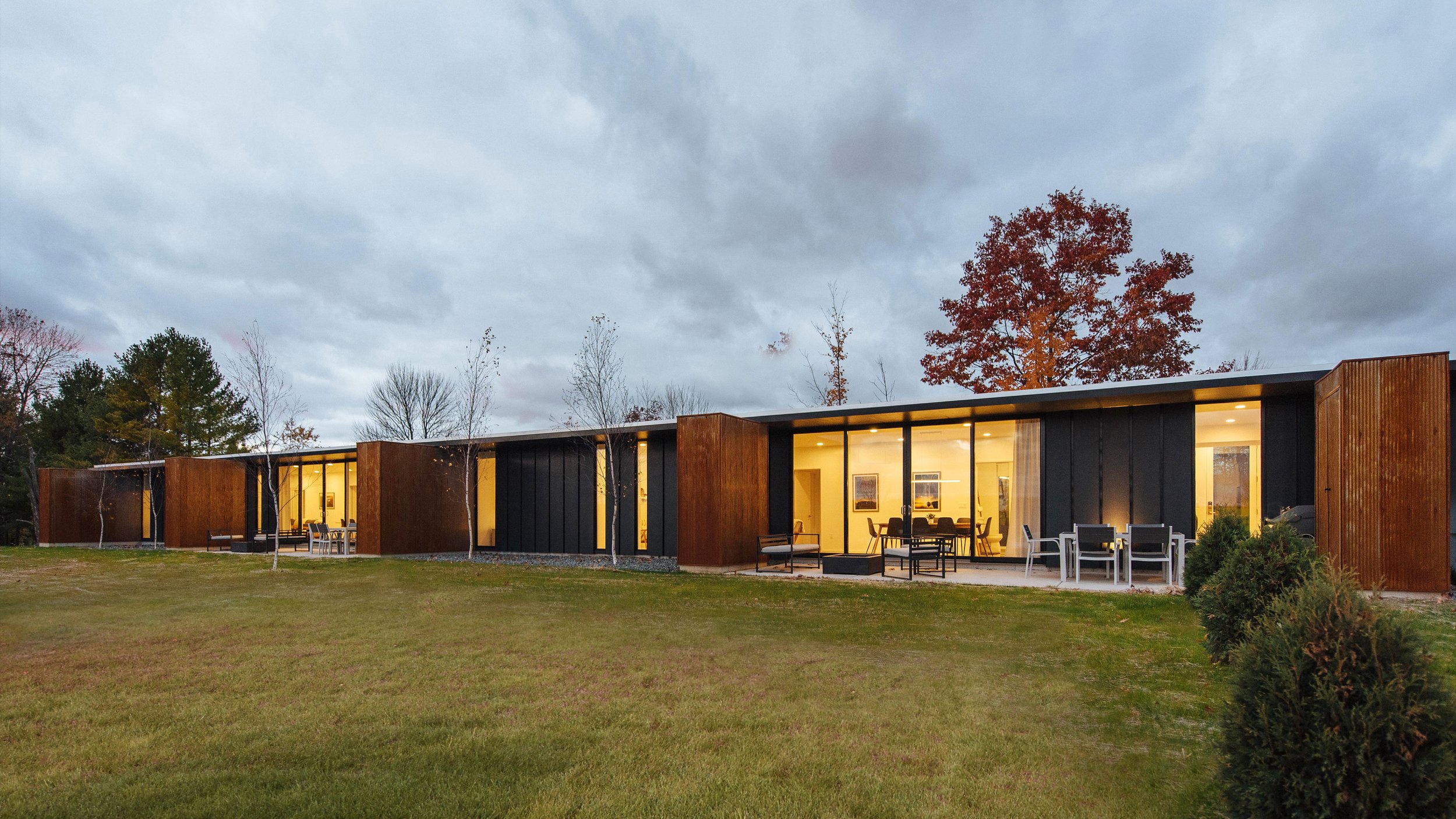egg harbor lodge II - egg harbor, wisconsin
Called Wisconsin’s Cape Cod, Door County peninsula is a popular vacation destination in the Midwest, but its calcified hospitality industry has been slow to adapt to the changing preferences and tastes of modern-day travelers who tend to be younger and more diverse than the clientele serviced in the past. In 2018, the Egg Harbor Lodge opened, a small development with one-bedroom vacation rentals. Conceived as an unapologetically contemporary alternative to the staid and often bromidic lodging options in the area, the inn’s immediate success compelled the owner to add a second, complementary structure with a pair of three-bedroom units for larger families and travel groups.
Perched on a grassy plateau overlooking Egg Harbor and mirroring the low-slung massing of the original lodge, the new building, called Egg Harbor Lodge II, is a simple, slender bar, its emphatic horizontality echoing the proud typological legacy of Midwestern roadside motels. Organized as a series of four adjoining modules with identical footprints, the building, in its current configuration, offers two commodious apartments but is set up for an easy subdivision into four smaller units, should demand or travelers’ preferences change in the future. A thin roof slab stretches across the individual modules and extends over a small forecourt that serves as a spatial threshold between the building’s front and back. From the adjacent parking pad, guests traverse the forecourt, an austere, partially covered space anchored by a tree, and connect to a path that leads to the rental units’ deeply recessed entryways.
Along the path, tightly spaced weathering steel fins organize the building façade, setting up a brisk vertical rhythm that tempers the perceived length of the structure. The fins faithfully align with the continuous roof edge above, but the actual perimeter walls behind them run at a slight angle, gradually carving into the rectilinear building volume to create an increasingly deep façade assembly, its oblique geometry subtly eroding the conventional, sharp delineation between exterior and interior.
Yellow accent panels mark the units’ individual front stoop. Guests enter a central living hall, a bright, open space with a small kitchen and room for eating and lounging. The interior palette is dominated by white walls, white lacquered cabinets, and a grey polished floor, all forming a decisively neutral, serene backdrop against which the ever-changing tableau of the landscape outside can unfold. Large sliding glass doors connect to a private patio and the shared backyard beyond. A series of weathering steel-clad sheds separate the private outdoor spaces and provide storage for the patio furniture during Wisconsin. The ferrous corrosion of their corrugated skin add an unexpected degree of rusticity that complements the building’s formal precision and material restraint.












